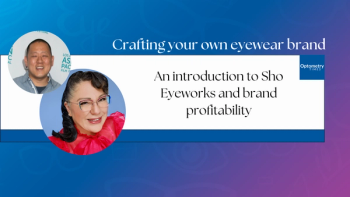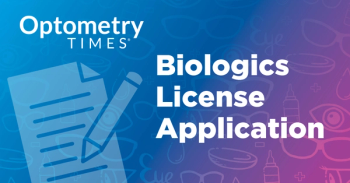
Phase 3 study assessing LUMIFY Preservative Free and LUMIFY eye drops meets primary end point
The study's primary objective was to demonstrate that LUMIFY Preservative Free redness reliever eye drops are noninferior to LUMIFY redness reliever eye drops in reducing ocular redness.
Recent results from a phase 3 study assessing LUMIFY Preservative Free redness reliever eye drops (preservative-free brimonidine tartrate ophthalmic solution 0.025%, Bausch + Lomb) in comparison with LUMIFY redness reliever eye drops demonstrated that the preservative-free drops are statistically noninferior to LUMIFY in reducing ocular redness in adults. The results from the randomized, active-controlled, multicenter study were published in Ophthalmology and Therapy.1,2
The study's primary objective was to demonstrate that LUMIFY Preservative Free is noninferior to LUMIFY in reducing ocular redness. The primary efficacy end point was an investigator-assessed ocular redness score 8 timepoints from 5 minutes to 240 minutes after drop administration on day 1. Finally, the secondary objective was the compare the safety of both drops.1
“Since launching in 2018, LUMIFY has been the No. 1 doctor-recommended redness reliever brand, known for delivering noticeable results in 1 minute and lasting up to 8 hours,”1 said John Ferris, president of consumer at Bausch + Lomb, in a news release from the company. “This study demonstrates that our new LUMIFY Preservative Free eye drops reduce redness quickly and are just as safe and effective as the original LUMIFY, providing a needed option for patients with eye sensitivities.”
The study included 380 participants with ocular redness, who were given either LUMIFY Preservative Free or LUMIFY in a single drop 4 times daily for 4 weeks. Study results show that the primary objective was met, with day 1 analysis of all 11 time points (1 minute to 480 minutes post administration) supporting these findings. Additional secondary efficacy end point data from 1 minute, 360 minutes, and 480 minutes post administration demonstrated that the LUMIFY Preservative Free drops perform similarly to the LUMIFY drops.1
“At visit 1, there was no significant difference between treatment groups in the number of participants achieving total clearance at any time of the 11 timepoints from 1 to 480 minutes post instillation, 2 participants from each treatment group had total clearance of ocular redness,” the study authors, led by Melissa Toyos, MD, partner at Toyos Clinic in Nashville, Tennessee, stated. “While not statistically significant, the percentage of patients with total clearance of ocular redness was numerically greater for the [LUMIFY Preservative Free, or] BTOS-PF 0.025% group than for the LUMIFY 0.025% group at the majority of timepoints from visit 1 to visit 3.”
The overall safety profile of the preservative-free drops was also favorable and comparable to LUMIFY, with a low incidence of adverse effects recorded when used as directed. These adverse effects could include rebound redness and loss of efficacy over time.1 Rates of ocular rebound redness were reported in 1.8% in the preservative-free group and 0.6% in the LUMIFY group. Adherence was reported to be high in the treatment groups, with preservative-free at 96.8% and LUMIFY at 97.9%.2
“The results show that LUMIFY Preservative Free is a well-tolerated alternative option for consumers with ocular redness who have sensitivities to preservatives or are at increased risk of ocular surface disease,” said Toyos in the release.
For the preservative free and LUMIFY groups, the drops were defined by participants as “comfortable” by 50% and 51.1% of the group respectively, “refreshing” by 20.2% and 20% respectively, and “cool” by 14.4% and 11.6% respectively.2
Study authors noted that limitations of the study included the absence of statistical inference possible for all secondary outcomes due to preplanned hierarchical analysis. “Although similar proportions of participants in the BTOS-PF 0.025% and LUMIFY 0.025% groups had dry eye at baseline, impact of baseline dry eye severity and lubricating drop use on redness response and/or tolerability assessments cannot be discounted,” the authors stated. They noted that investigating the short-term effects and longer-term outcomes, including additional assessment visits after discontinuing treatment beyond the 7-day mark, could be avenues for future studies.2
References:
Bausch + Lomb announces publication of phase 3 data on LUMIFY Preservative Free redness reliever eye drops. News release. Bausch + Lomb. July 29, 2025. Accessed July 29, 2025.
https://www.bausch.com/newsroom/news/?id=277 Toyos M, DiVito M, Messmer EM, et al. A multicenter randomized double-masked study comparing preservative-free brimonidine tartrate ophthalmic solution 0.025% with LUMIFY 0.025% for ocular redness in adults. Ophthalmol Ther. 2025. https://doi.org/10.1007/s40123-025-01194-z
Newsletter
Want more insights like this? Subscribe to Optometry Times and get clinical pearls and practice tips delivered straight to your inbox.










































